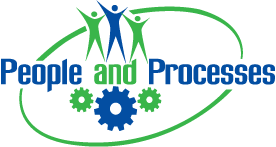Many people who have read my book People – A Reliability Success story have told me that they know most of the characters in the book. For those who haven’t read it – it’s the story of one group’s journey from reactive to world class maintenance and the journey of the people within the group.
The reason for this is very simple – they are based on people I have met over the years that I’ve been enjoying living in the maintenance world, most of whom worked at a paper mill just like the one in the book. What is different about the book however, is that it doesn’t focus solely on the strategies and tactics but also on how the people became involved and engaged. Of course, understanding the strategies and tactics was also key but that was a learning the mill maintenance manager, Bob, had to make so that he could guide the group in the right direction.
He was faced with the usual group make up – one or two who were eager and enthusiastic – one or two were going to oppose anything and everything and the rest would watch with interest until they figured out which way things would fall. Bob faced the challenge all new, and not so new, managers face – where to start first? Should he work with the people or should he try and change the way they did things and what should he change them to? I think we’ve all seen situations where people move into positions that they deserve but have had no coaching in how they need to transition the skills change. Another challenge is expectations – whoever it was that appointed you to the position has expectations – they are expecting you will make your presence known, that you will immediately make moves to improve and, last but not least, they expect you succeed – all without help or guidance. So Bob does the only thing he can and that is try and figure what exactly he does know and what do those around him know? What he finds is what most of us find, there is the good, bad and the ugly in our processes, strategies, skills and interest. Bob quickly figures out who he can lean on – who had skills they were not using and who had to be watched and handled carefully. The one good thing that Bob does from the very start is to involve the people – even the naysayers and challenges everyone to start to look at different perspectives and makes it clear that there was no way he was going to be able to solve all of the problems himself. He is quite frank about what staying the same might result in – the mill wasn’t competitive - and he was honest enough to admit he didn’t have all of the answers but he could certainly come up with the right questions that needed the answers.
If you face the same sort of challenges and you are not sure what the questions are or what the direction should be, consider enrolling in our award winning Maintenance and Reliability for Managers 4-part series course. A public course is starting soon or better yet, bring it to your site where you can get more people involved.
Get the details here or contact Tammi @ (843) 814-3795
Bob starts to ask these questions and quite often doesn’t get an answer – not even a wrong one - and so he has to figure what needs to happen for him to get these answers – again even if it’s not the one he likes. As people start to hear more of what Bob and those he was using to support him had to say they became more interested and were more than willing to get involved. Understanding that if he took the time to evaluate every initiative or waited for demonstration of success then he might stifle the momentum, he explains that justified risk taking was acceptable but there were the constraints that everything had to be communicated in case there was a glaring error of judgement and the outcome was going to be in line with the goals the group had set. By osmosis the group starts to gel and peer pressure starts to push the negative side over to the positive and when someone suggests that the biggest naysayer of all be the one that visited the paper mill that Bob was modelling his efforts after, Bob pulls the master stroke by agreeing. Bob the takes the time to get a better understanding of why the nayersayer naysayed and was then able to support him – the result was the one that pushed Bob’s efforts past the tipping point -as someone once said ‘One convert is worth a hundred volunteers’. By the end of the book, the group has embraced the latest condition monitoring techniques, the CMMS was where anyone went if they wanted those elusive answers, everyone believed in what they were doing and more importantly – in themselves.
So just some takeaways that you can think about.
What are the expectations of you – do you know what they are and how to meet them?
Do you involve everyone around you or do you take everything on yourself?
Do you focus on the positives or waste time dealing with the negatives in the group?
Are you comfortable with justified risk or are you completely risk-averse?
Do you know where to go for help and answers or do you rely on what you already know?
Do you understand that the people mean as much, if not more, than the processes?
If you have questions or comments or would like more details on the journey contact me at cwilliams@peopleandprocesses.com
